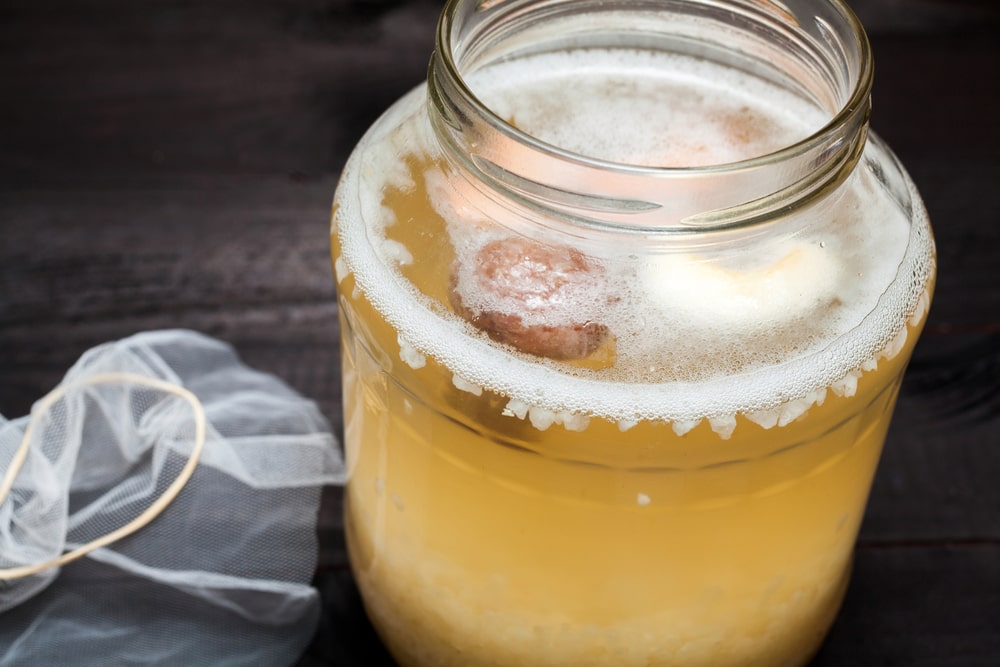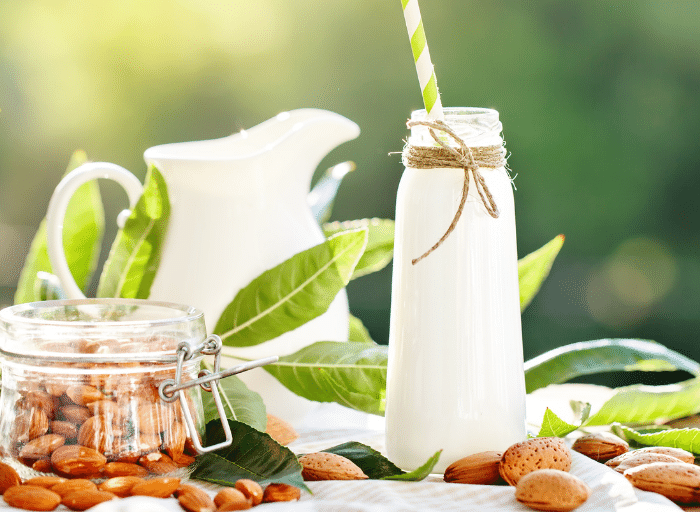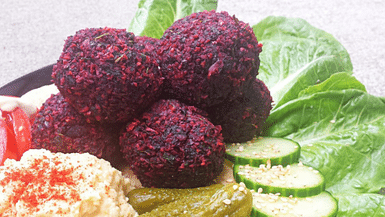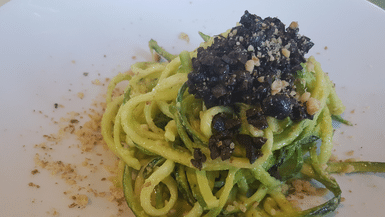The basic process for the first fermentation of water kefir is very simple:
- one litre (or US quart) of water,
- 1/4 cup of tibi (water kefir grains, crystals, or tibicos).(Available here)
- 1/4 cup of sugar.
There are a lot of recipes for kefir that add other things like a slice of lemon, ginger, or dried fruit to the initial ferment, but really, water and sugar is all you need to make water kefir.
If you do decide to add lemon or lime, add a slice, not juice, as juice will raise the acid too high too soon.
The main thing, apart from water and sugar, is to keep the jar covered but not sealed while it ferments, and keep the jar somewhere not too hot, not too cold, and out of direct sunlight.
Around 20 degrees C (70 degrees F) is ideal. Tibi will ferment slower if it’s cooler and faster if it’s warmer.
Around 24 hours will give a sweeter kefir, 48 hours gives a sourer version.
It’s best not to ferment for longer than 72 hours, or you might end up with vinegar, as the tibi use up all the sugars and produce lactic acid.
A good plan is to try the kefir water after 24 hours to check the taste.
When you are first using water kefir, it may be best to start with a shorter period of fermentation, depending on your taste.
Tiny bubbles may appear on the side of the bottle and on the surface of the water kefir, this is carbon dioxide being released by the tibi as it breaks down the sugar.
Most of the tibi will be at the bottom of the jar, but you may also notice some float to the top.
This is normal and due to small amounts of gas being trapped inside the grain.
After 48 hours (less if you want a sweeter kefir), just prepare a fresh batch of sugar water, pour the kefir into clean bottles or jars, straining out the tibi, and put the tibi back into the new sugar water to brew your next batch.
That’s it, you’ve made water kefir! Drink, and enjoy the health benefits as well as the unique taste.
If your tibi are very happy, you may find that they grow, and there’s a little more there after each batch.
You may need to increase the amount of sugar and water you add to successive batches depending how much tibi there is.
But don’t worry if your tibi don’t seem to be growing, as long as they are staying the same size and still fermenting nicely, you can keep using them indefinitely.
If there seem to be less tibi after each batch, or they aren’t fermenting well, switching the type of sugar or water you use may help.
It will take at least a couple of batches for your new tibi to settle in and get up to full fermenting strength, longer if they were dehydrated.
Using a mix with white sugar or demerara sugar will give a far lighter coloured kefir water, more of a straw colour.
If you find the taste of your kefir is too strong, using a lighter sugar gives a milder flavour.
Tibi take on the colour of the sugar they are fed, so if you feed them a lighter sugar, they will become lighter in colour.
After the first ferment, the water kefir has its own unique taste, and may not be very fizzy.
You can drink it or add it to smoothies and other recipes now, keep it bottled in the fridge for up to a few days, or add flavouring to it like ginger, lemon, vanilla, or fruit juice.
The kefir will continue to ferment in the fridge, but very slowly due to the low temperature.
The longer it is left in the fridge, the less sweet it becomes as the kefir use up any remaining sugars.
How to make fizzy water kefir

You can also do a second fermentation in a sealed bottle if you want fizzier water kefir.
To do this, add your choice of fresh fruit juice, dried fruits, herbs, or other flavouring to the water kefir (see Recipes section for some tips).
A good ratio is one part juice to four parts kefir.
Tightly seal it, and allow to ferment for 12 to 48 hours.
Grolsch style flip top bottles are good for this, or you can reuse clean jars with lids or screw top wine bottles.
For a faster ferment with more fizz, leave the bottles out of the fridge on the counter top, or do a slower less fizzy ferment in the fridge.
The finished result will be less sweet than the original juice, as the kefir organisms eat up the fruit sugar.
Do be aware that pressure can build up inside the bottle due to the natural carbonation process.
It’s wise to open the bottles at least twice a day to release the gas build up.
Be very careful when opening a sealed water kefir bottle.
Don’t shake the bottle before opening it, you may end up wearing your kefir (don’t ask me how I know that!).
The safest way to open a sealed kefir bottle is to cover the lid with a cloth and slowly open it over the sink.
Bottles can even explode if the fermentation is left too long, especially in hot weather.
If you’re concerned about safety, plastic bottles can be used for this stage.
Also, bear in mind that adding extra sugar or fruit juice to the second ferment can increase the alcohol content.
For children, you may wish to simply flavour the kefir with juice for immediate drinking rather than culturing further.
The amount of fizz does vary from a gentle tingle on the tongue to shook-up-Coke-can fizzy.
You may find it takes a few batches or even a few weeks for your new tibi to develop their full fizz making capacity, especially if you bought dehydrated tibi.
Don’t expect to always get a fizz like commercial soft drinks.
The amount of fizz depends on the length of fermentation, the sugar content of the juice, the temperature, and how active your tibi are.
The water kefir fizz generally tends to be gentler and dissipate faster than most soft drinks.
Fizz will not develop unless the bottle is tightly sealed.
Using darker less processed sugars for your first ferment will also produce a more exuberant fizz.
For maximum fizz, chill the kefir for a short time only, immediately before drinking.
It tends to taste better cold, but refrigeration will reduce the fizziness.



